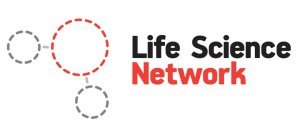How Life Science Network can create networking opportunities for scientists
Life Science Network, lifescience.net, helps scientists boosting their networking skills in no-time. Here, the founder Alen Piljic explains why scientists need to join.
As a scientist it is crucial to have a well established network to get in touch with researchers who are working in your field, but in another institute or country. These new contacts can provide you with new insights to solve the research issues you have been struggling with for months. Life Science Network was created to help scientists in the life science area with this important task. Pieter Torrez from Crastina (www.scigrades.be) had a talk with Alen Piljic, one of the founders of LSN.
1. Hi Alen! Can you explain me a bit about the Life Science Network? In your opinion, what do you think makes it unique?
Life Science Network (lifescience.net) is a web platform for professional networking and sharing of information and knowledge in life sciences. The platform is built o n top of a directory of research infrastructure. This includes not only universities, institutes, and companies, but also internal structures, such as departments and research groups. There are different functional modules integrated with the infrastructure directory, and each module allows sharing of a different type of content, such as scientific events, job openings or research protocols.
n top of a directory of research infrastructure. This includes not only universities, institutes, and companies, but also internal structures, such as departments and research groups. There are different functional modules integrated with the infrastructure directory, and each module allows sharing of a different type of content, such as scientific events, job openings or research protocols.
What makes the platform unique is the way information is shared and the fact that shared content can be associated not only with the researchers, but also with the places where they work. The consequence is that information can be discovered more easily and that scientists that join our network can easily filter content relevant for their work. For example, if you organize a science event in your institute, there may be many scientists working in a nearby institute or university interested in this event, but if they are not connected to you, they will not know about the event. But if you associate the event with the place where you work, and they follow your institute, they will be notified about the event and won’t miss it.
2. What are the most important advantages for scientists of being on this platform?
Scientists can use the platform to present themselves and their research. This is a feature many professional networks share. But they can also use the platform to share different types of content with the community. For instance, group leaders and professors can advertise their job openings, PhD and post-doc positions, while young researchers can follow them or the entire institute to get notified about those career opportunities. Scientists can announce their seminars, share research protocols, preprints etc. At the same time, they can define their interests in terms of institutions or places they are interested in, topics, and other scientists, in order to create a personalized stream of content that is relevant for their research. The stream can also include news articles and announcements, or journal content. There are currently 50 scientific journals that scientists can follow to get notifications about new content that is published in those journals.
3. How will the platform contribute to the communication and collaboration between scientists across the globe?
There are many cities and regions which host a number of universities and institutes. Often, the buildings are not more than a few hundred meters apart, and yet communication between them is often poor. Imagine you invite a famous researcher to give a lecture at your institute. Other scientists working close by may also be interested in attending that lecture, but often don’t know about it. By integrating seminars of all institutions in a single platform, everyone can be notified about the events in the area they follow. They can attend the seminars, interact with their colleagues and potentially create new collaborations. This is just a specific example. But each module is different and their benefits and potential have to be evaluated independently. Even the very basic structure, which makes it easy to discover expertise in your own institute is something that can help many scientists. We used to work at one of the best research institutes in Europe in the field of molecular life sciences. And even there, if a scientist would join a nearby lab and posses a very unique skill set which is relevant for your work – there would be no way to know it, because the digital infrastructure supporting researchers was poor. Now this problem is solved and if scientists working at an institute join, they can easily browse through the institute’s structure or run location specific search queries to find colleagues that can help them with their research.
4. Can you give three pieces of advice to the person who starts using the platform?
Life Science is rich in functions. This will make it easier for others to discover you and your work. Life Science Network has many functions, so I would advise everyone to explore it and find those features that are most useful to them. Finally, I would advise everyone to set up their stream filters and tweak them in order not to miss any information relevant for their research.
5. What are the future plans for LSN?
The most important will be to increase the performance of the site and optimize the existing features. Apart from that, we need to invest a lot of work into ensuring the platform is richer with content. Then there is outreach. We need to make sure all life scientists learn about the network and what it can mean for their work. Engagement will also be needed at the level of institute management. For instance, we can easily import all seminars of an institute into our database, if the institute is willing to share this information in a standardized format that can be computationally processed. However, while some share seminar information intuitively, others require a lot of convincing.
Aside from LSN, we are also working on other projects. One of the projects is aimed at improving communication between the scientists and the general public. It is called Science Simplified (scimplified.com). The project aims to integrate all science news from universities and institutes across the world and by looking at the metrics of the articles they publish, help them improve their outreach. We are also working with other scientists on alternative publication concepts. There is no shortage of really good ideas, but the implementation of these projects will depend heavily on the support of the community, funding agencies and other stakeholders.
- Break it Down: Refreshing Science Communication - February 8, 2017
- How to create clear and attractive graphs/illustrations? - September 5, 2016
- How platforms like External Diffusion can highly improve the outreach of your research paper - April 18, 2016
- How platforms like Clarafi can drastically improve your scientific visualization skills - April 6, 2016
- How social platforms like AcademicLabs can make it easier to find the right research partners and aim high - March 23, 2016
- How science communication agencies like Mediomix can enlarge the outreach of your research - February 29, 2016
- How Life Science Network can create networking opportunities for scientists - January 27, 2016
- German design team creates “Next Generation Scientific Poster” - December 13, 2015






Leave a Reply
Want to join the discussion?Feel free to contribute!